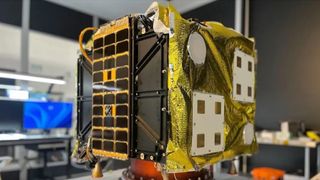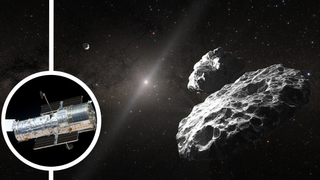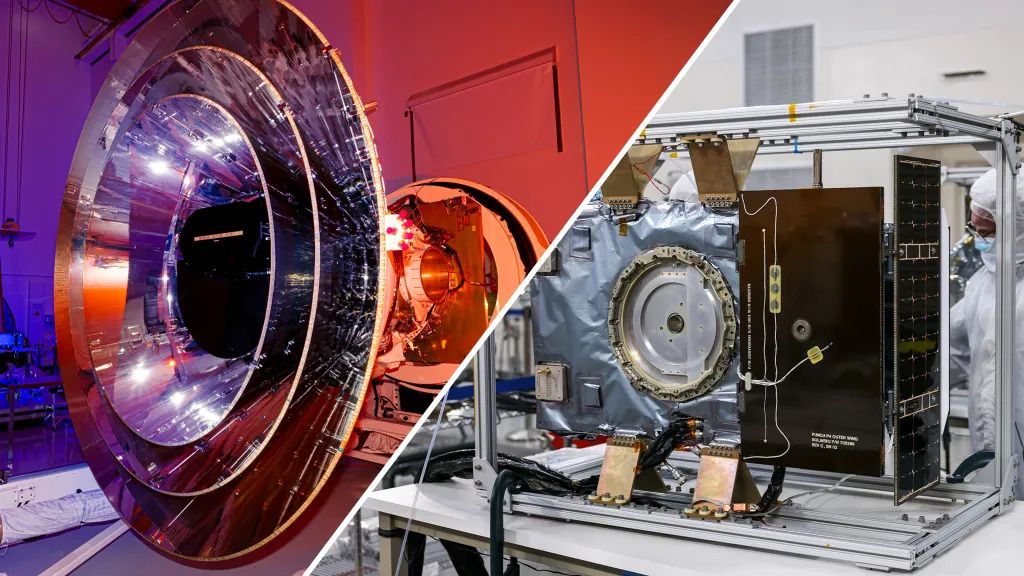Two NASA astronauts who launched on a short mission to the International Space Station last year that turned into a 9-month marathon finally know when they’ll be coming home. The Boeing Starliner astronauts, who launched on the spacecraft’s Crewed Flight Test on June 5, have been living aboard the International Space Station (ISS) ever since after their capsule returned to Earth without them. On Friday (March 7), NASA cleared a relief crew to launch on SpaceX Dragon next week, setting the stage for their long-awaited return to Earth. NASA astronauts…
Read MoreTag: Space Exploration
FAA investigating SpaceX Starship Flight 8 explosion that disrupted commercial flights
SpaceX’s latest Starship to attempt to reach space exploded nine minutes after its launch this week, leaving a trail of debris in its wake. Airports in Florida were forced to halt flights as the threat from impacts extended south to the Bahamas and Turks and Caicos Islands. Now the Federal Aviation Administration (FAA) is again requiring SpaceX to perform a mishap investigation into what led its eighth Starship test flight to end with a loss of the vehicle. The rocket launched toward space Thursday (March 7) from SpaceX’s Starbase facility…
Read MoreWatch fiery SpaceX Starship Flight 8 debris rain down over The Bahamas (video)
Starship put on a show for skywatchers yet again — but not the way that SpaceX would have liked. SpaceX launched the eighth test flight of Starship, the biggest and most powerful rocket ever built, from its Starbase site in South Texas on Thursday evening (March 6). Starship‘s huge first-stage booster, known as Super Heavy, came back to Starbase for a launch-tower catch about seven minutes after liftoff as planned. But the vehicle’s 171-foot-tall (52 meters) upper stage — called Starship or just Ship — experienced a serious problem shortly…
Read MoreSpaceX loses Starship rocket stage again, but catches giant Super Heavy booster during Flight 8 launch (video)
Starship’s eighth flight was a lot like its seventh. SpaceX launched the eighth test flight of its Starship megarocket today (March 6), sending the 403-foot-tall (123 meters) vehicle aloft from its Starbase site in South Texas at 6:30 p.m. EST (2330 GMT; 5:30 p.m. local Texas time). Seven minutes later, Starship’s huge first-stage booster, known as Super Heavy, returned to Starbase for a dramatic catch by the launch tower’s “chopstick” arms. It was the third time that SpaceX has demonstrated this jaw-dropping technique. SpaceX’s Starship launches on its eighth test…
Read MoreHope is all but lost for private asteroid probe in deep space — ‘the chance of talking with Odin is minimal’
The first-ever private asteroid mission appears to be over, just a week or so after it left the ground. California startup AstroForge launched its Odin spacecraft on Feb. 26, on the same SpaceX Falcon 9 rocket that sent Intuitive Machines’ IM-2 mission toward the moon. Odin ran into trouble just a few hours later, however, and AstroForge has pretty much given up hope of recovering the 265-pound (120-kilogram) probe. “The chance of talking with Odin is minimal, as at this point, the accuracy of its position is becoming an issue,”…
Read MoreVarda space capsule returns to Earth in 1st commercial landing in Australian Outback (photos)
Varda Space has successfully landed a reentry capsule in Australia, delivering critical data that could advance in-space manufacturing and hypersonic technologies. California-based startup Varda’s Winnebago-2 (W-2) capsule launched along with 130 other payloads on Jan. 14 atop a SpaceX Falcon 9 rocket, on the Transporter 12 rideshare mission. After six weeks in orbit, the capsule made a fiery plunge through Earth’s atmosphere, landing Feb. 28 at Koonibba Test Range in South Australia, which is operated by Southern Launch. W-2 contained a spectrometer from the Air Force Research Laboratory (AFRL) and…
Read MoreHubble Telescope discovers a new ‘3-body problem’ puzzle among Kuiper Belt asteroids (video)
NASA’s Hubble Space Telescope has discovered that a system of asteroids in the distant Kuiper Belt may be triplets, not twins as previously suspected. If so, the stable trio of icy space rocks would be just the second example of three gravitationally bound space rocks found in the Kuiper Belt, the doughnut-shaped region of icy bodies that lurks out beyond the orbit of Neptune. The discovery could also challenge our understanding of how Kuiper Belt objects (KBOs) form. An illustration of the 148780 Altjira system of two or maybe three…
Read MoreThe US will ‘plant the American flag on the planet Mars and even far beyond,’ Trump tells Congress
President Donald Trump told lawmakers that U.S. astronauts will one day carry the American flag to Mars and beyond during a speech before the joint session of Congress late Tuesday (March 5). “We are going to conquer the vast frontiers of science, and we are going to lead humanity into space and plant the American flag on the planet Mars and even far beyond,” Trump told Congress during his speech to a joint Senate and House of Representatives on Tuesday night. “And through it all, we are going to rediscover…
Read More‘Stuck’ NASA astronauts on ISS grilled on Earthly politics as long 9-month mission nears end. ‘From my standpoint, politics is not playing into this at all.’
Butch Wilmore and Suni Williams are getting ready to wrap up their surprisingly long — and unexpectedly controversial — orbital stay. The two NASA astronauts arrived at the International Space Station (ISS) in June on the first-ever crewed mission of Boeing’s Starliner capsule. They were supposed to stay at the station for just a week or so, but Starliner experienced thruster problems on the way up, and NASA extended the mission multiple times to investigate. Finally, in late August, the agency announced that Starliner would come back to Earth uncrewed,…
Read MoreNASA delays launch of SPHEREx and PUNCH missions to March 6
NASA’s SPHEREx and PUNCH missions will need to wait a little longer before heading to space. After delaying the launch of these missions three times — they were originally slated to take to the skies on Feb. 27 — the space agency has postponed liftoff once again for SPHEREx and PUNCH. Both payloads will still be launching aboard the SpaceX Falcon 9 rocket selected for the task, which had most recently targeted Tuesday (March 4) for launch. Now, the pair will remain Earth-bound until Thursday (March 6). They’ll liftoff from…
Read More








